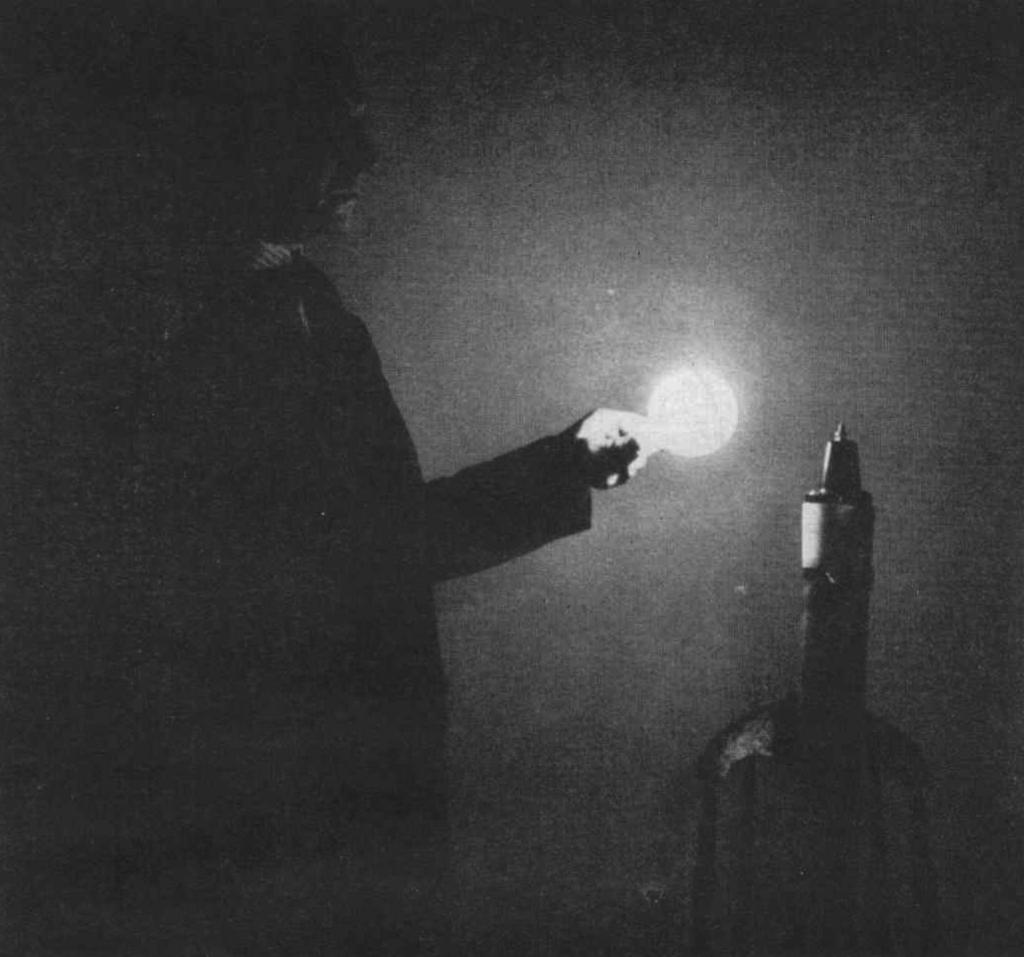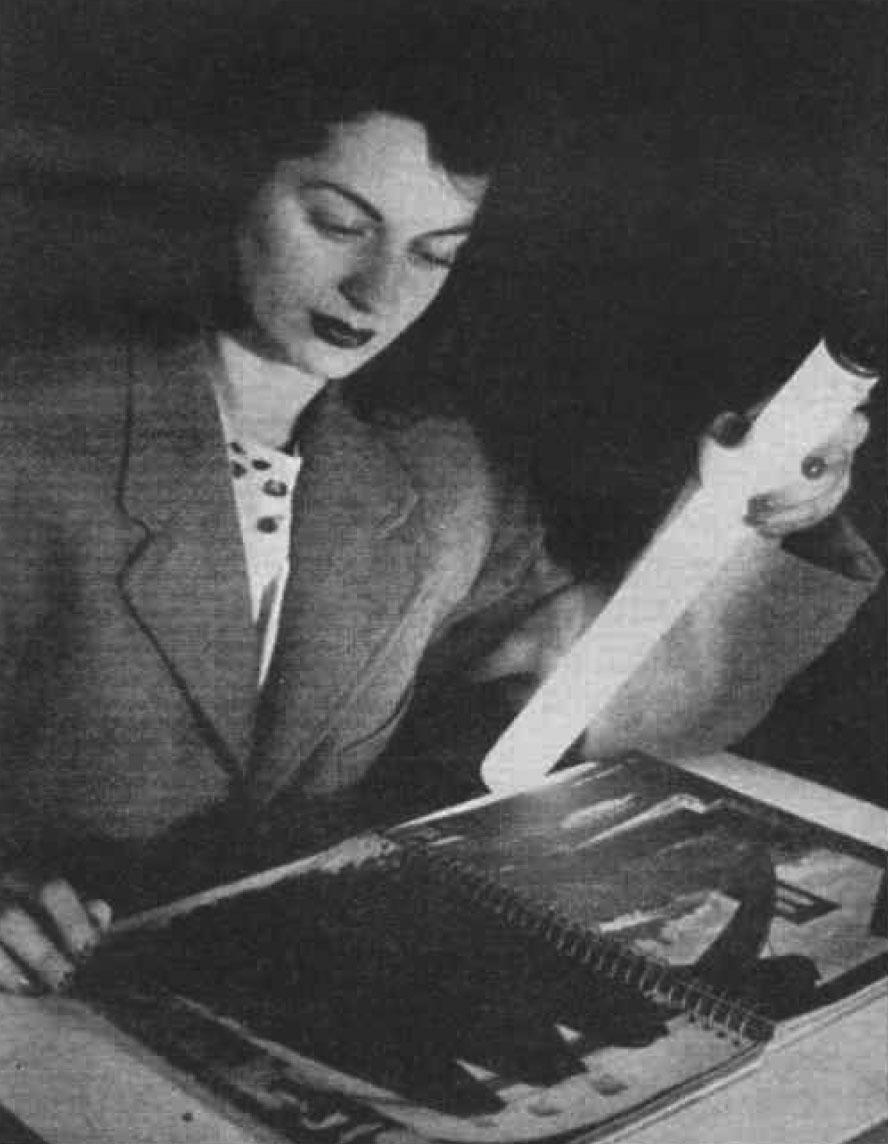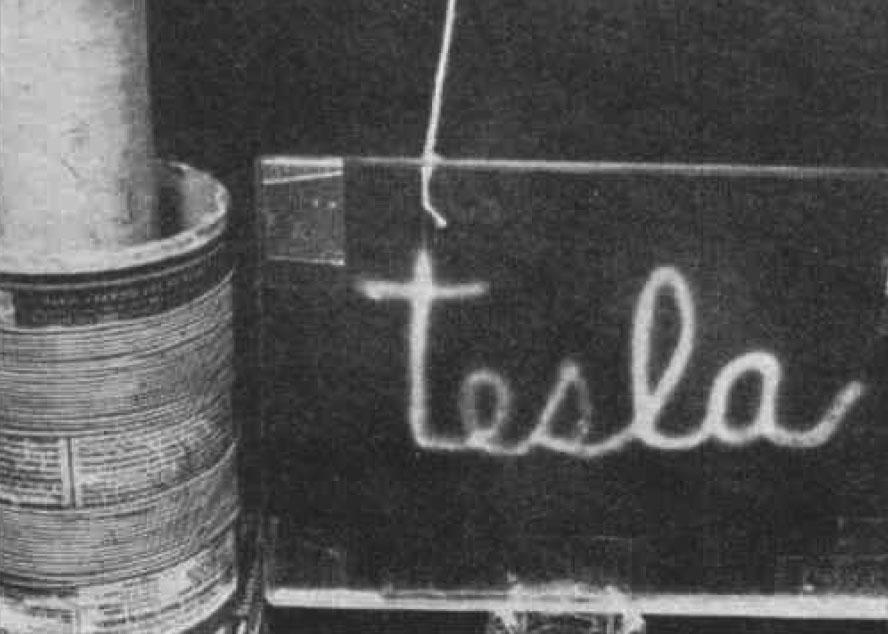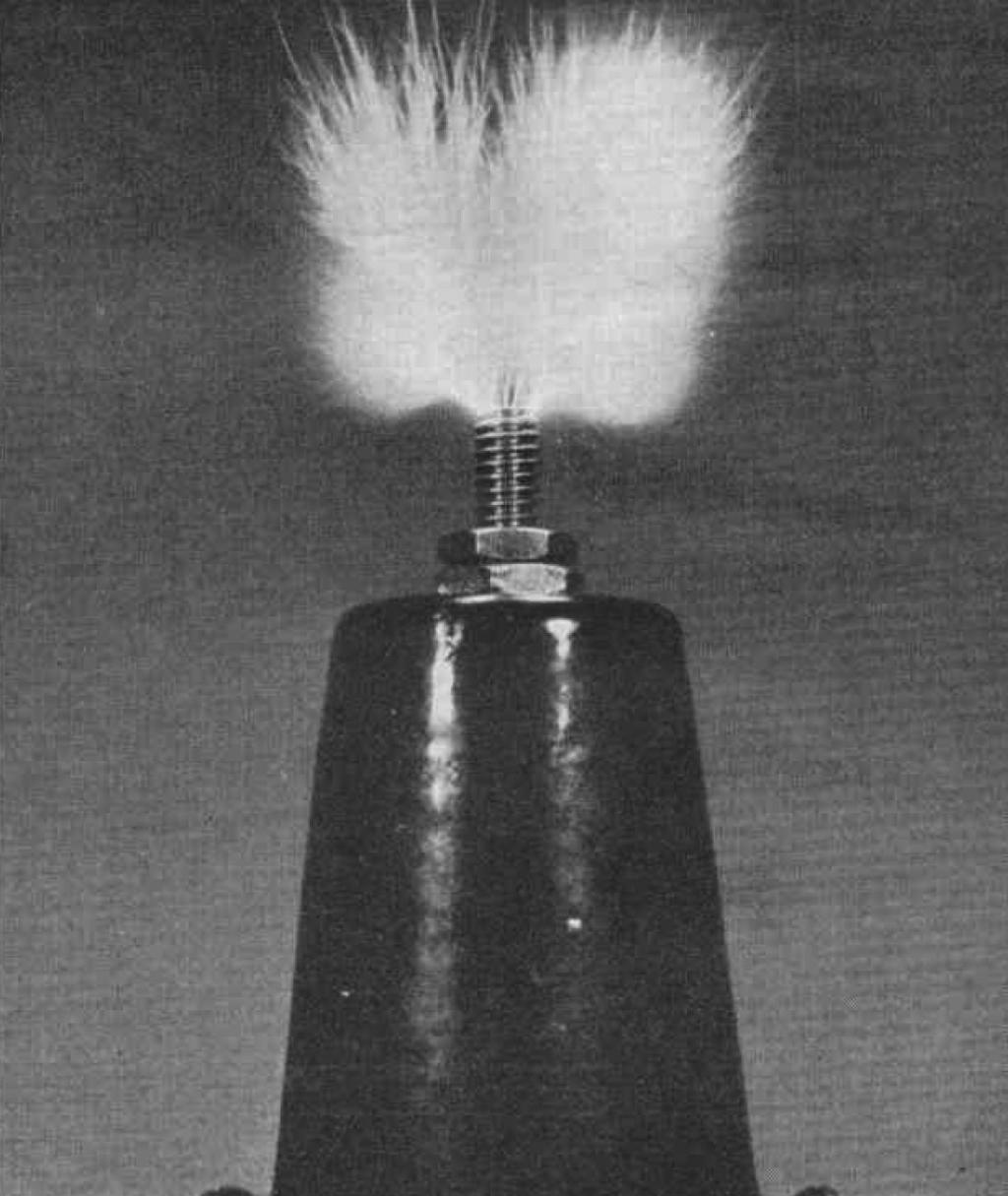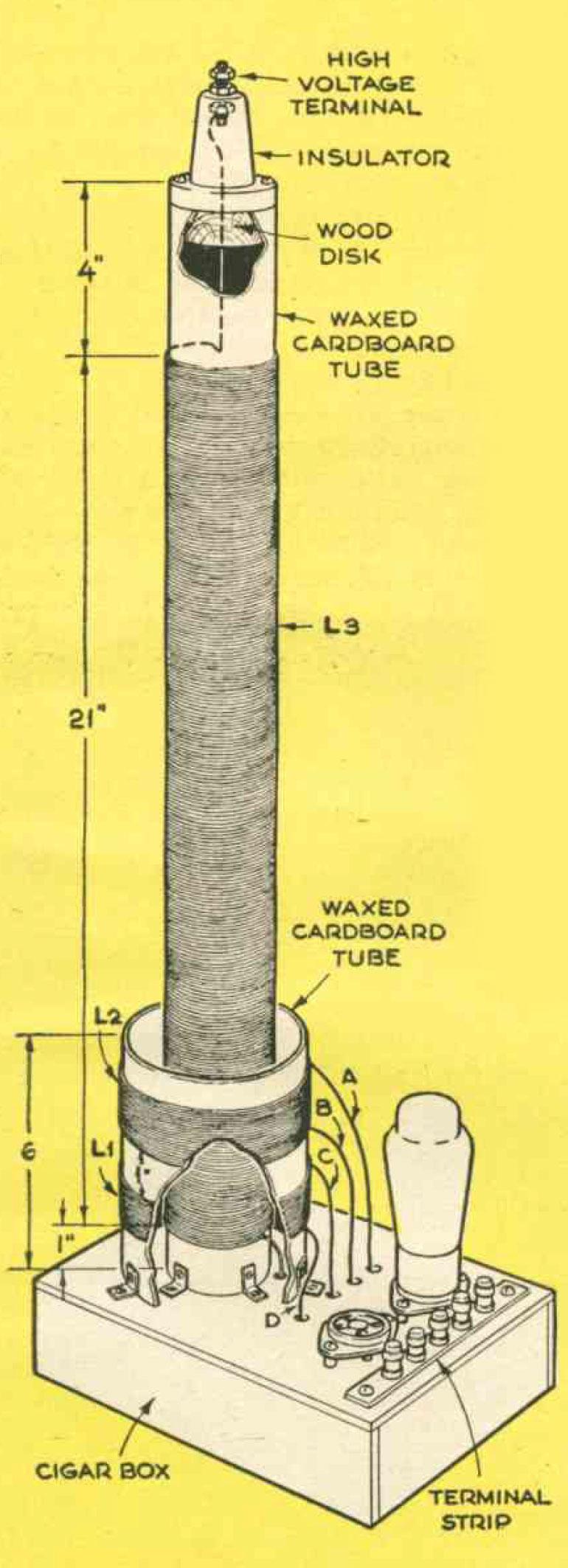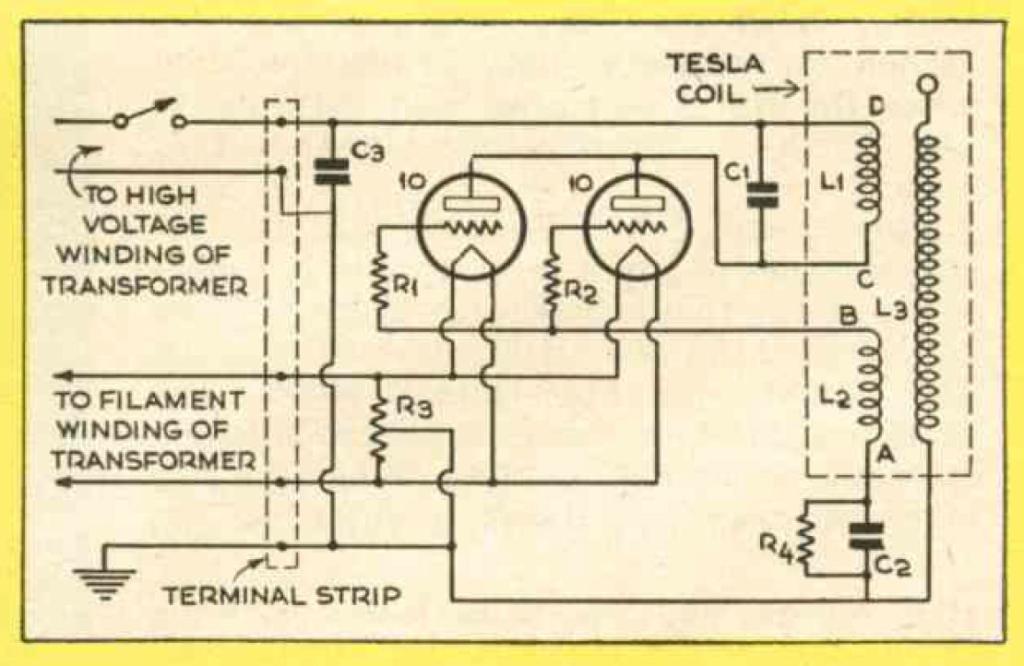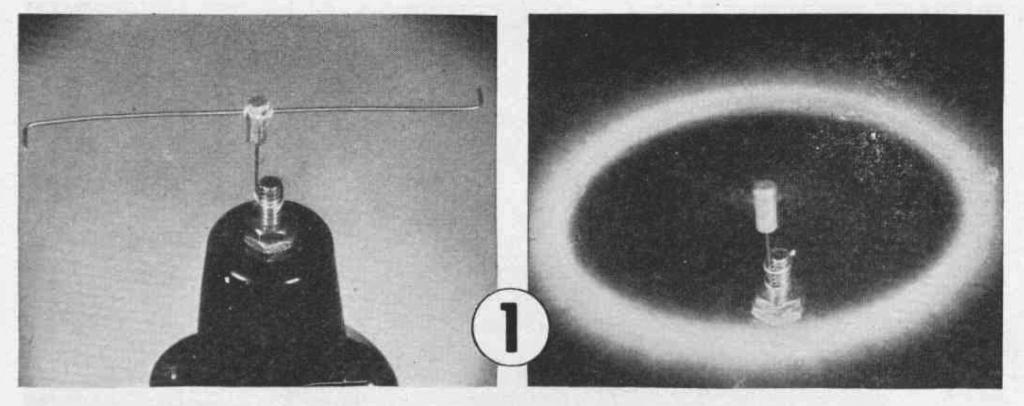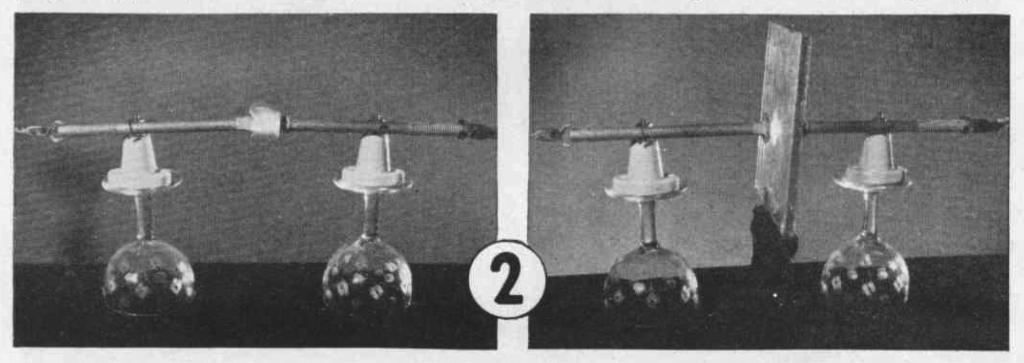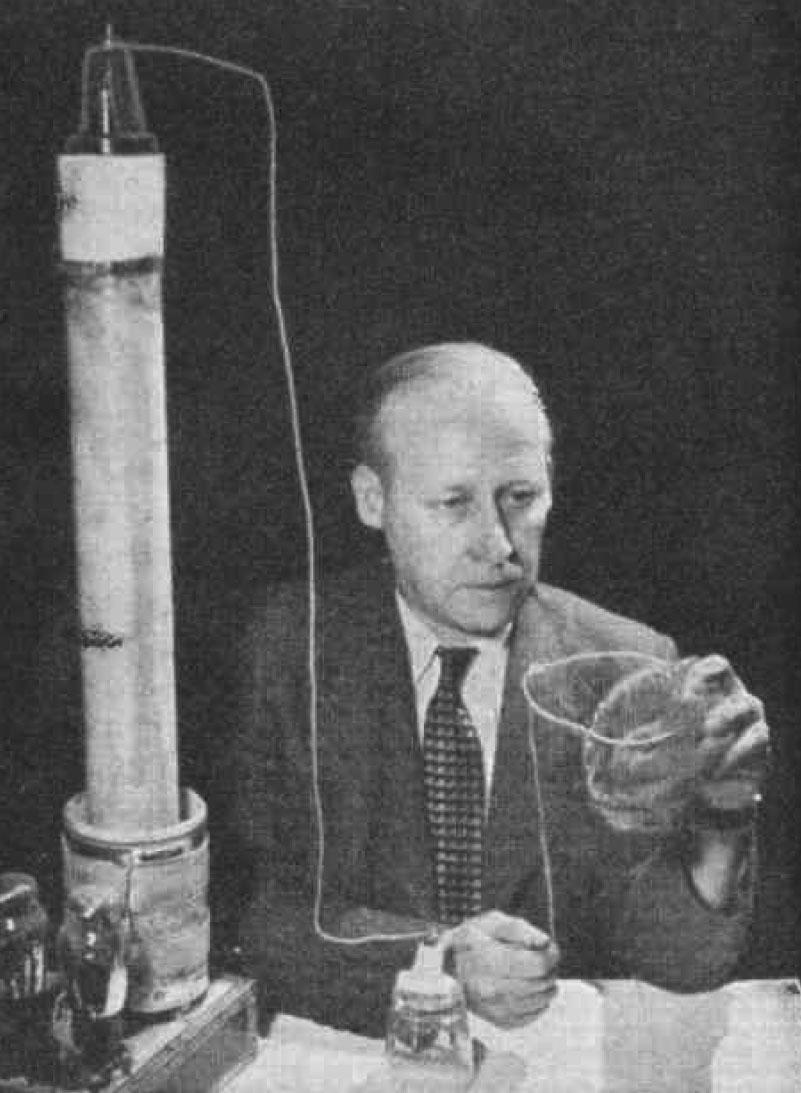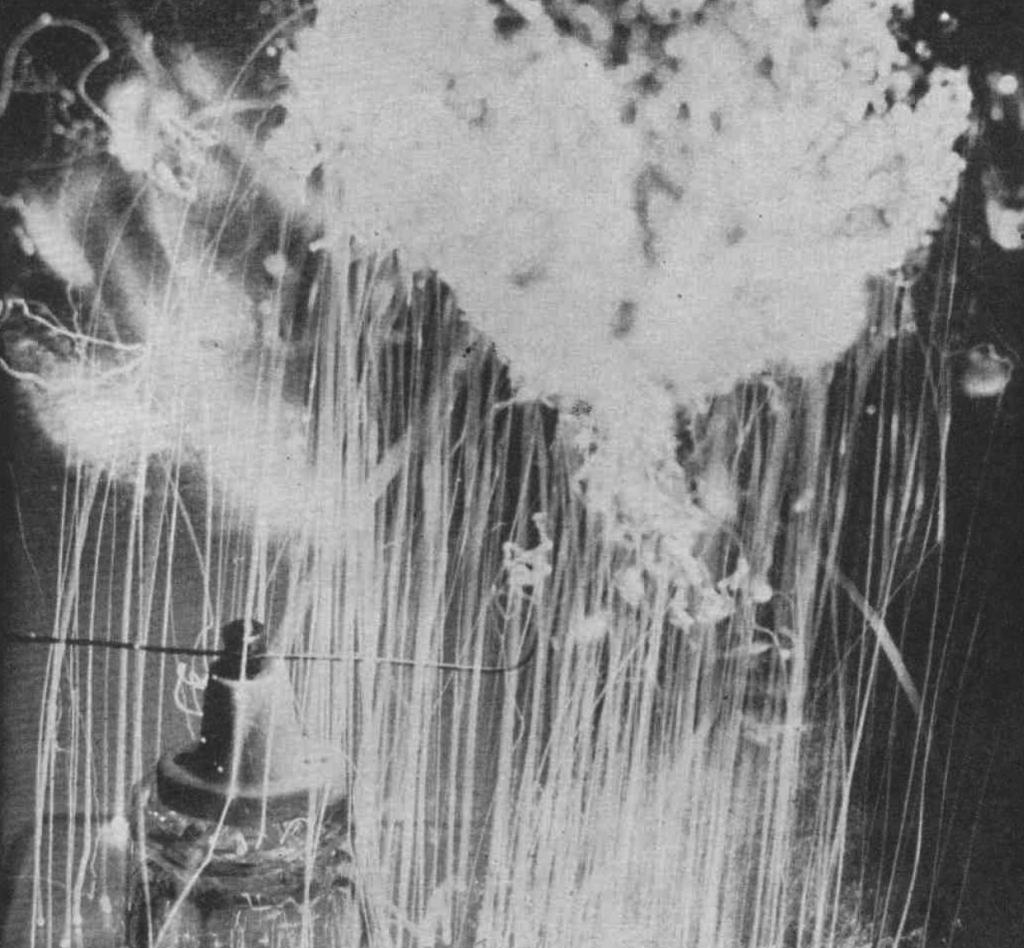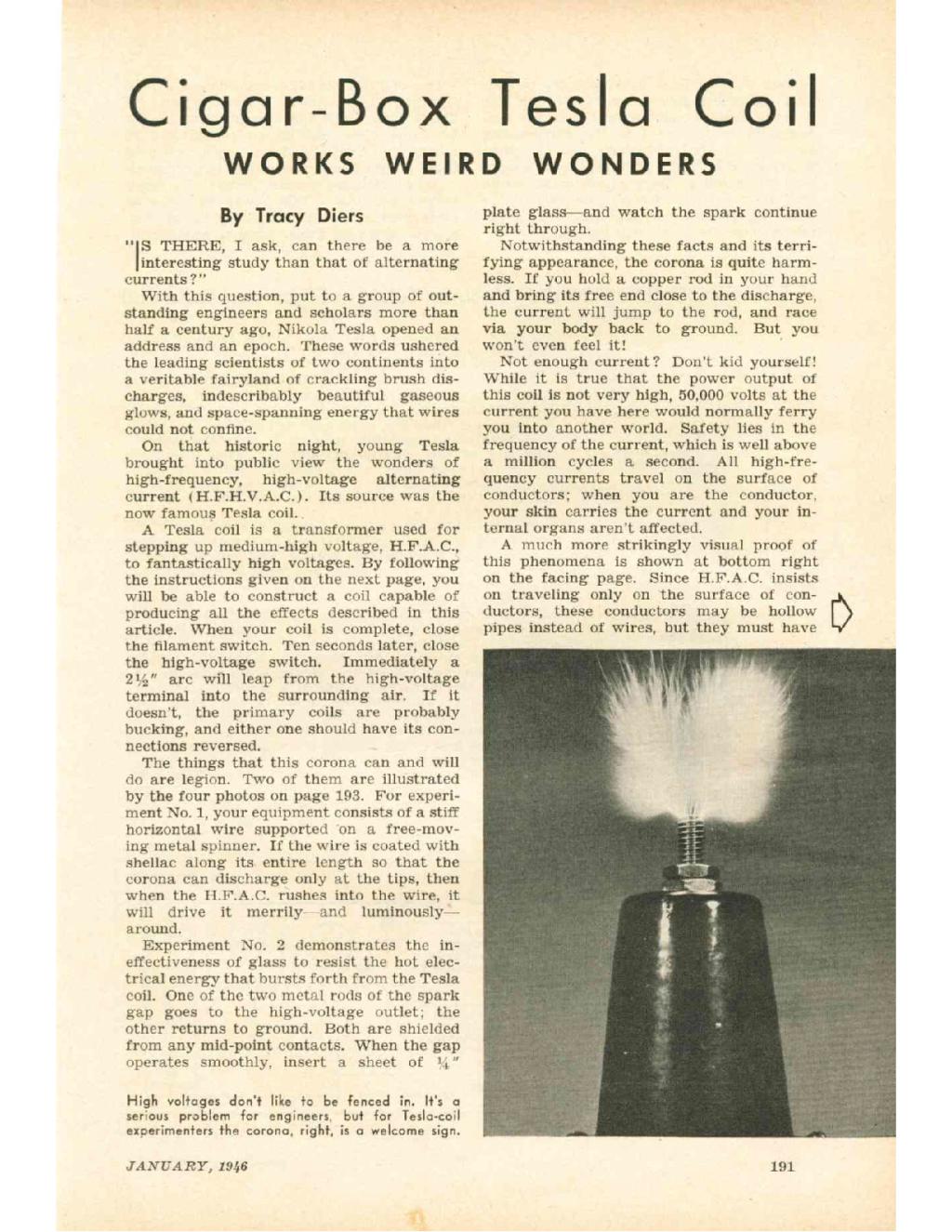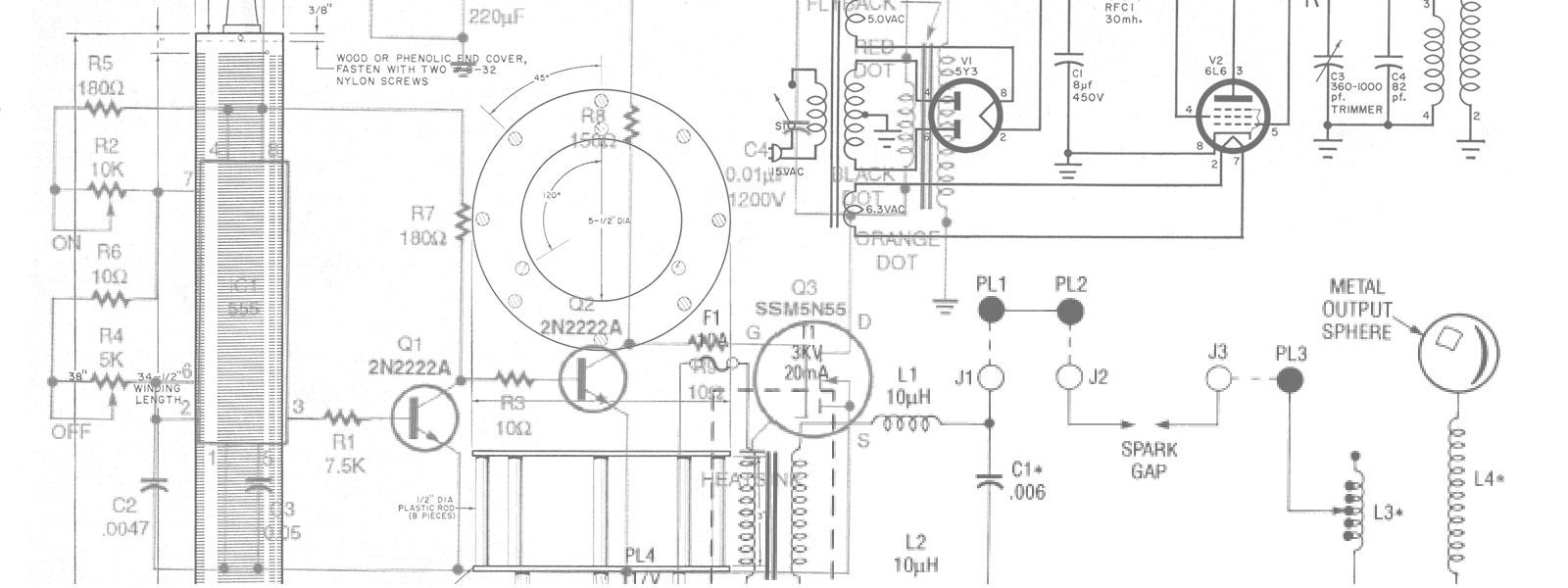
Plans
Cigar-Box Tesla Coil
Works Weird Wonders
“Is there, I ask, can there be a more interesting study than that of alternating currents?”
With this question, put to a group of outstanding engineers and scholars more than half a century ago, Nikola Tesla opened an address and an epoch. These words ushered the leading scientists of two continents into a veritable fairyland of crackling brush discharges, indescribably beautiful gaseous glows, and space-spanning energy that wires could not confine.
On that historic night, young Tesla brought into public view the wonders of high-frequency, high-voltage alternating current (H.F.H.V.A.C.). Its source was the now famous Tesla coil.
A Tesla coil is a transformer used for stepping up medium-high voltage, H.F.A.C., to fantastically high voltages. By following the instructions given on the next page, you will be able to construct a coil capable of producing all the effects described in this article. When your coil is complete, close the filament switch. Ten seconds later, close the high-voltage switch. Immediately a 2 1/2" arc will leap from the high-voltage terminal into the surrounding air. If it doesn't, the primary coils are probably bucking, and either one should have its connections reversed.
The things that this corona can and will do are legion. Two of them are illustrated by the four photos below. For experiment No. 1, your equipment consists of a stiff horizontal wire supported on a free-moving metal spinner. If the wire is coated with shellac along its entire length so that the corona can discharge only at the tips, then when the H.F.A.C. rushes into the wire, it will drive it merrily - and luminously - around.
Experiment No. 2 demonstrates the ineffectiveness of glass to resist the hot electrical energy that bursts forth from the Tesla coil. One of the two metal rods of the spark gap goes to the high-voltage outlet; the other returns to ground. Both are shielded from any mid-point contacts. When the gap operates smoothly, insert a sheet of 1/4" plate glass - and watch the spark continue right through.
Notwithstanding these facts and its terrifying appearance, the corona is quite harmless. If you hold a copper rod in your hand and bring its free end close to the discharge, the current will jump to the rod, and race via your body back to ground. But you won't even feel it!
Not enough current? Don't kid yourself! While it is true that the power output of this coil is not very high, 50,000 volts at the current you have here would normally ferry you into another world. Safety lies in the frequency of the current, which is well above a million cycles a second. All high-frequency currents travel on the surface of conductors; when you are the conductor, your skin carries the current and your internal organs aren't affected.
A much more strikingly visual proof of this phenomena is shown below. Since H.F.A.C. insists on traveling only on the surface of conductors, these conductors may be hollow pipes instead of wires, but they must have surface area - lots of it. If you try to conduct high-frequency currents through fine wires without enough surface area, the current will leap clear into the surrounding air, causing the inadequate wire to glow with a ghostly light. If you spell out a word with a continuous piece of 30- or 32-gauge bare copper wire, connect one end to the high-voltage terminal, and sandwich it between glass, the word will light up.
With a Tesla coil built from a few familiar radio parts you can try for yourself the fascinating experiments described in this article.
The coils are wound on ordinary cardboard tubes. A core 2 1/2" in diameter by 26" long is used for the high-voltage secondary. Coat the outside of the tube with hot paraffin, and, when dry, wind a 21" coil of 30-gauge D.C.C. wire evenly and smoothly, starting 1" from the bottom. The end of this wire is brought up inside the tube through a wood block and insulator. Drill a 3/4" hole in the round block, boil it in paraffin, and glue it into the top of the tube. Screw the insulator directly to the block.
For the other coils, cut an oatmeal box down to 6" in length and use 16-gauge D.C.C. wire for both windings. L1 can start 1" from the bottom and extend for 15 turns. Leave another 1" space and wind 20 turns for L2. Cover all the coils with a good shellac.
When dry, attach the secondary coil to the cigar box with small metal brackets. Bring the ground lead inside the box, making sure that it does not come near the primary. Then slip the larger form over the other and attach it in the same way. Carry the leads into the box through four small holes and fill the holes with shellac.
Connect the high-voltage side of a power transformer - 500 volts or more - to the input of the Tesla coil through a single-pole, single-throw switch, and use a separate switch for the filament leads.
A pair of four-prong sockets is needed for the type-10 tubes; other parts shown in the wiring diagram are: R1, R2: 2,700 ohms, 10-watt wire-wound resistors; R3: 40 ohms, centertapped; R4: 5,000 ohms, 10 watt; C1: .001 mfd., 1,000-volt mica; C2, C3: .0005 mfd., 1,000-volt mica condensers.
One of Tesla's great dreams concerned the transmission of power without wires. He didn't quite make the idea practicable, but he came close enough to enable you to amaze your friends and amuse yourself with these stunts based on wireless power transmission. Connect a metal plate to the high-tension terminal. This power transmission plate must be well insulated from the ground. A short distance away, arrange another insulated plate so that its face is parallel with that of the first. If you touch this power-receiving plate with a screwdriver, you will draw sparks from it even though it has no wired connection with any source of electrical energy. At still greater distances - say 8' to 10' - you should be able to light a neon tube by bringing it close to the receiving plate. Small nails scattered on the table between the two plates will also throw sparks at your screwdriver.
Now for the public part of your demonstration. Place the Tesla coil in one room and locate the power-transmitting plate close to a wall that connects with another room. Draw a chair up to the adjoining wall in the second room - preferably darkened - and begin to read a book. Do you need light? Easiest thing in the world! Just pick up a 20- or 30-watt fluorescent tube. As long as you keep your hand on the tube, it will stay lit. This works well as far as 12'. Perhaps it even presages the day when we will carry our lamps from room to room without wires.
Are you tempted to do just that with your homemade Tesla coil? Well, don't! In the first place the system would prove relatively inefficient. Even more important, it will reduce your neighbors to a state of frenzied hair pulling. This is a point well worth bearing in mind when conducting your experiments. All high-voltage devices generate some static, causing interference with radio and other electrical equipment in the vicinity. Out of consideration for your neighbors, you should avoid using your Tesla coil at those hours when you know that most people are listening to their radios.
Clearly, a good deal of electrical energy is popping out of your Tesla coil. As you might expect, it packs a lot of beat. Hold the end of a cigar or cigarette close to the output tap, and it will readily light up. If you pass the cigarette through the corona, a large number of tiny holes will appear in the paper. An alcohol-soaked cloth will also burst into flames on being brought into contact with the corona.
Fine metal wire, such as steel Wool. provides a fine fireworks display. Arrange a stiff wire structure, as shown at right, so one end will make contact with the terminal and the rest is well insulated from ground. Spread some steel wool across the wire loop and close the Tesla-coil switch. The steel wool will carry the current for a moment only - then it becomes white hot and disintegrates. That's a picture of what's left of the stuff right above.
